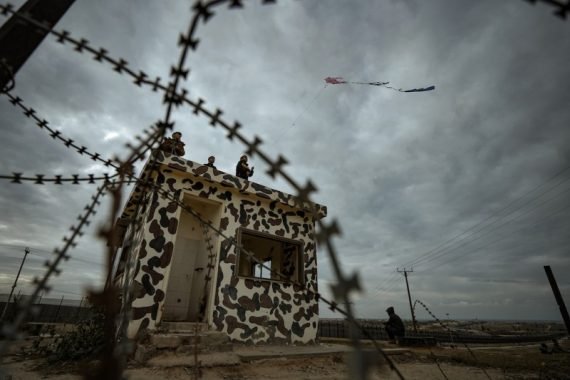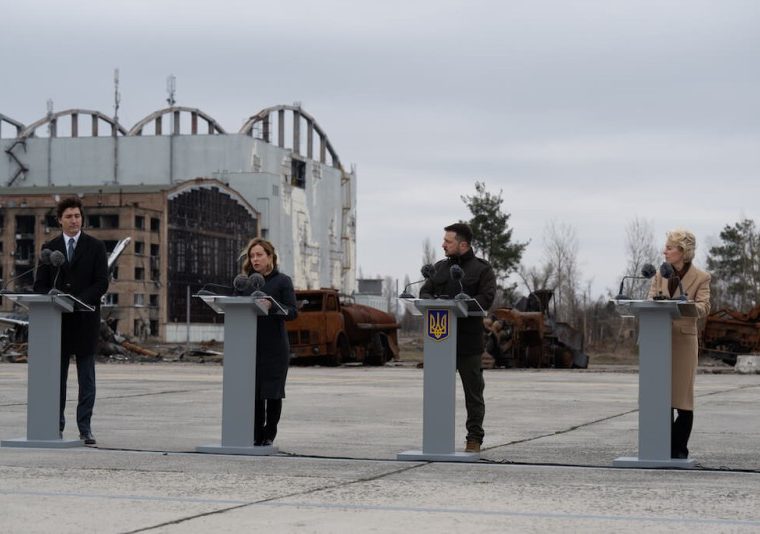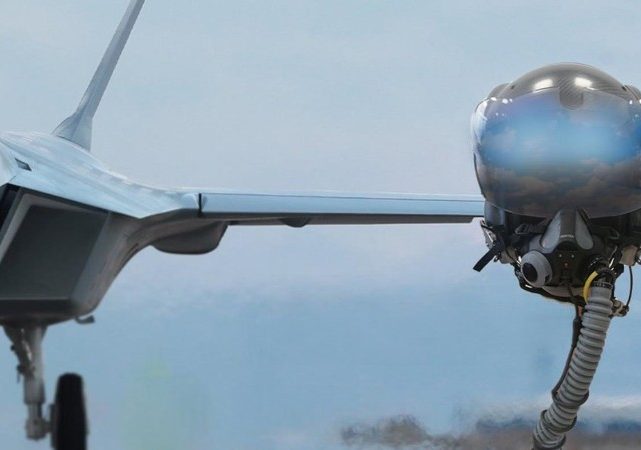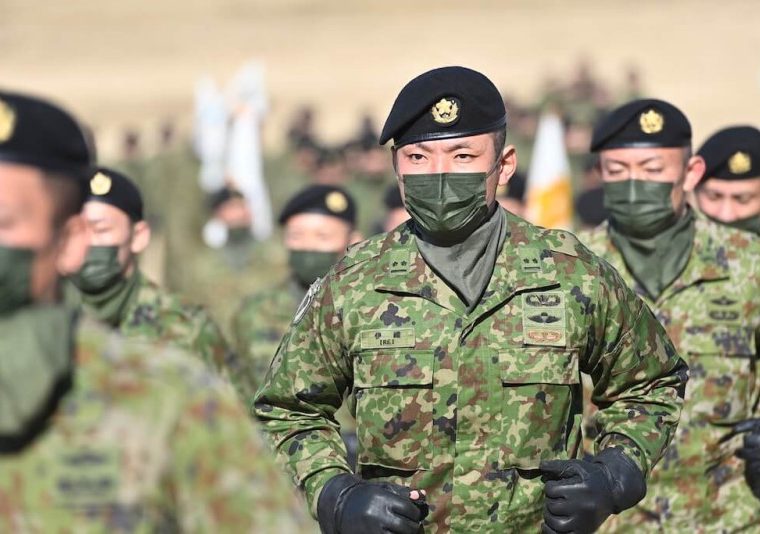T
he October 7 attack symbolized a significant day in history: the surprise attack by the Egyptian and Syrian armies in the Yom Kippur War exactly 50 years before led to an analogy between the two attacks. The October 7 operation by Hamas ended up in defeat for the Israelis as a result of their misinterpretation of intelligence data.
“Israel fell victim to overconfidence, which leads to arrogance and complacency. Hamas did what we normally do: surprise, intelligence and thinking outside the box.”
This was how former Israeli prime minister Ehud Olmert described the weakness of Israel’s security umbrella in the October 7 attack. Since then, investigations and inquiries by domestic authorities have continued in many different contexts to diagnose the intelligence problem.
It is important to examine the suggestions as to why the Israeli security mechanism could not detect what happened on October 7, and to try to identify Israel’s shortcomings as it presents itself as the country with the most important intelligence institutions in the world.
The emphasis on surprise in Olmert’s quote is a very important concept and is key to explaining the process. This article will not deal with the political goals and geopolitical implications of Operation al-Aqsa Flood and instead will focus on the dimensions of the operation that are considered an operational success for one side and an intelligence weakness for the other.
Why were the reports before October 7 not taken seriously?
It seems that October 7, 2023 will be a subject of investigation for a long time to come. The problems of the Israeli security apparatus in investigating the reports and passing them on to higher authorities is one of the most unclear aspects of the attack. The information reflected in open sources in the aftermath of the incident suggests that a flow of information was indeed provided; however, it appears that the main problem lies in the evaluation process of the incoming reports.
First-class intelligence organizations provide a flow of information using many different methods including signals intelligence (SIGINT), which involves the collection of electronic data, and imagery intelligence (IMINT), which involves the collection of satellite images of the other side. Yet, Israel, which has an advanced standard in these fields, does not prioritize HUMINT, i.e. human intelligence—a fact that is considered to be its most serious weakness. On the other hand, intelligence systems and technological capabilities gain value in accordance with the people who use them. The comments made by experts to the press after the incident confirm that there are problems in the Israeli intelligence apparatus in terms of correctly analyzing the information received.
So, how did the Israeli security apparatus fail to detect the preparations for such an attack in advance? According to revelations from reliable sources, intelligence channels had actually provided the necessary warnings to higher authorities. Preparations were detected in the region near the Gaza border and warnings were issued, but these warnings were ignored with authorities describing the data as an “imaginary scenario.” Soldiers working in kibbutzim, i.e., Israeli communal farming settlements, near the Gaza border, such as Nahal Oz, passed on information that tunnels and pits had been dug and powerful explosions had occurred in Gaza. However, all these intelligence reports did not reach the highest echelons of the army. When we look at the whole sequence of events, we are faced with the fact that a mistake was made in reading the intelligence data.
Did “technological arrogance” underestimate the flow of human data?
The Israeli security concept underestimates the flow of human information. Sources inside the Israeli intelligence community claim that Israel is very confident in its technological capabilities in the region and as a result it has tended to downplay the flow of information that can be obtained from human elements. Monitoring radio conversations between Hamas members was seen as a waste of time and the flow of humanitarian information was ignored.
Another observation from the field was that regional actors did not foresee that the Izz ad-Din al-Qassam Brigades had the capacity to carry out such an attack. The fact that the armed wing of Hamas shared the raid with a very small group of operational members and even hid it from its political wing or regional alliances was also reflected in the statements of these groups. The data we have show that Operation al-Aqsa Flood was carried out by members of the al-Qassam Brigades, consisting of approximately 1,500 people.
The ghost haunting Israel: The legacy of Yom Kippur
The October 7 attack also held a significant symbolic meaning as it came exactly 50 years after the surprise attack by the Egyptian and Syrian armies in the Yom Kippur War. The Agranat Commission, set up by Israel after Yom Kippur, focused on the main intelligence weakness which was found to be poor analysis. Before October 7, Israeli security sources assumed that Hamas would not benefit from any attack—but the intentions of one’s enemy are not always based on strict rationality. Evaluating each other on an overly rational basis can lead to misdiagnosis.
Henry Kissinger, U.S. secretary of state at the time of the Yom Kippur War, described the impact of Egypt’s decision to start the war on Israel by stating that “Anwar Sadat, the former Egyptian president, paralyzed his opponents with his own prejudices.”
Using surprise theory to evaluate October 7
Surprise is not a systemic or structural phenomenon. Surprise exists in the mind of the victim. Surprise is about human cognition, perception, and psychology. In other words, differences in risk perception between strong and weak competitors link the structural environment that creates incentives for surprise and the cognitive environment that creates opportunities to surprise the opponent.
The book The Secret World: A History of Intelligence by Christopher Andrew, a prominent historian of both British and global intelligence, is important. In his voluminous work, Andrew cites The Art of War by General Sun Tzu, who lived in China between 544 and 496 BC. Andrew also conveys the themes of intelligence and deception in the treatise Arthashastra, attributed to the government advisor Kautilya (350-283 BC). These sources emphasize the importance of the use of spies and surprise in the period in which they were written.
The emergence of modern intelligence agencies in the 20th century and the creation of the Central Intelligence Agency (CIA) in the U.S. as an organization focused on intelligence analysis paved the way for the study of surprise in the intelligence dimension. Researchers, including major intelligence scholars such as Michael Handel (with studies in 1977 and 1984), Richard Betts, and Ariel Levite (who discussed the topic in 1987 and 1989) have focused on this issue. Finally, in 2009, James Wirtz suggested the need for a theory of surprise.
What causes surprise and is it inevitable?
Handel begins his 1977 article “The Yom Kippur War and the Inevitability of Surprise” with a reference to the metaphor of “Minerva’s owl,” a symbol of wisdom, by German philosopher Friedrich Hegel. Referencing ancient mythology, Hegel writes, “When the pale color of philosophy meets the pale ground, it means that the manifestation of life is completing the days of old age. (…) The owl of Minerva does not begin to fly until dusk. Reality can only be grasped when reality is fully revealed and truly cut through.”
Handel believes that surprise is a force multiplier. It allows one side to gain the temporary numerical superiority needed to launch offensive operations. Surprise temporarily suspends the dialectical nature of strategic struggle by removing an active opponent from the battlefield. It transforms war into an event in which the probability of some events can be determined with some degree of certainty, the outcome of which is not only known in advance but is determined by one party to the conflict.
The root of the problem lies in the limits of human cognition and knowledge. These limits coincide with the limits of the ability to predict the unexpected or the new. Denial, deception, or an unfavorable signal-to-noise ratio, compartmentalization, hierarchy, group bias, organizational culture, and the need to please the bureaucracy prevent the avoidance of surprise. This is the problem of the Israeli security establishment: the prejudices of the intelligence-gathering institutions and the communication failures of the hierarchical layers can be overcome with a very good plan by their opponents—in the case of October 7, Hamas.
Recommended
Handel argues that it is possible to define when and where this Pandora’s box will be opened and why the consequences will be devastating for one party. However, the party that achieves the surprise suffers a devastating setback when the box is closed. Although surprise plays a crucial role in asymmetric attacks and special operations, it is questionable whether it contributes enough to the ultimate victory of the war.
Dialectically, everything in war has a cost. Operational security impedes planning and briefing. Diversionary attacks and deception operations can stand on their own or divert combat resources from the main battle. According to Wirtz, even successful surprise attacks, such as the September 11 attacks, were carried out with very narrow margins of success. The same conditions were present in Hamas’s Operation al-Aqsa Flood: the military wing of Hamas divided the planning of the operation into different units, so that each participant received information according to their job description.
Even when the victims of surprise detect the beginnings of an initiative, they tend to assume that the initiative is beyond the enemy’s ability to execute. This asymmetry in caution is described by Handel as a paradox. This paradox, labeled the “risk paradox” by Handel, can be summarized as follows: risky actions are less predictable. Handel warns that focusing solely on the immediate tactical advantage of surprise can lead to an underestimation of the overall risk of the chosen course of action. In the case of an unexpected attack, the risk increases as the probability decreases, and the probability increases as the risk decreases.
Reading the October 7 attacks with the theory of surprise
Hamas’s Operation al-Aqsa Flood created a domino effect in its scope and results. The attack proved that even years of occupation and blockade could not prevent the execution of a well-planned offensive. The fact that even a country like Israel, which has advanced technological capabilities, was caught so unprepared will be the subject of research for years to come.
The theory of surprise is useful in explaining the factors that make certain actors or systems more susceptible to surprise. The theoretical approach to surprise attacks also helps strengthen intelligence analysis and risk management. On the other hand, the complexity, unpredictability, and limited scope of the concept should also be taken into account in assessments.






